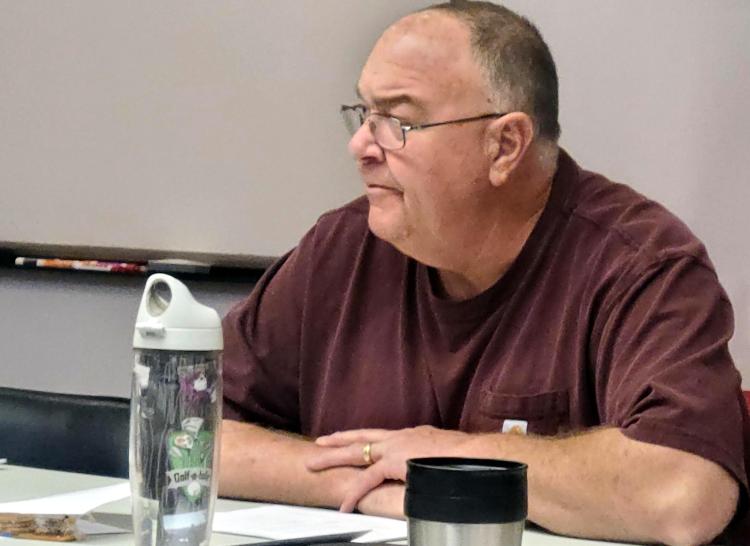
LIVERMORE FALLS — Select Board members from Jay and Livermore Falls on Thursday evening, Feb. 20, unanimously approved $3.83 million in upgrades recommended for Milestone 3 at the Wastewater Treatment Facility in Livermore Falls.
The plant is owned and operated by Livermore Falls, was built about 1972 and upgraded in 1998, according to a Sun Journal report. It serves sewer users in both towns, which are splitting the cost of the upgrades, it notes.
Planning began in 2018,with an initial cost of $5.8 million, according to the Sun Journal. Figures provided by Jay/Livermore Falls Sewer Superintendent Mark Holt list $24 million funds secured as of Feb. 18 with $16.25 million provided through grants and $7.75 million from loans. Costs for Milestone 1 upgrades, which have been completed, are $14 million, Milestone 2 upgrades are estimated at $3.32 million and Milestone 3 upgrades are $3.83 million for $21.15 million total.
To date $14.54 million has been spent, leaving a balance of $9.46 million, Holt said. Grant moneys will be used to pay down the loans, he noted.
“The estimated annual payment is $249,400,” Holt stated. “That will be divided between the two towns.”
Congressionally Directed Spending [CDS] grant funding accounts for $1.7 million awarded in 2021 and $7 million in 2023, according to Holt’s information. He acknowledged Sen. Susan Collins along with Sen. Angus King and Rep. Jared Golden for their efforts to secure the funding.
He said from the $3.83 million available for Milestone 3 upgrades, conservative estimates for the work leave $608,000 for contingency if needed. There is no intention of going over the original amount of money, further borrowing isn’t being considered, he stated. “Something is going to come up, something is going to have to be redesigned,” Holt noted.
Jim Long, a Livermore Falls selectman, asked about the status of the CDS funding with what’s happening in Washington, D.C.
“We thought there was going to be a snafu for our last payment,” Holt said. “We hurried, worked really well with our engineers, our contractors and got it submitted before the shutdown. Once the $7 million CDS funding is available and we can start to draw on it, we will give the engineer the go ahead to start designing.”
Holt noted Milestone 3 upgrades were initially going to be done in 10 years. “The money is available and we have the resources to do it now,” he said. “It won’t cost taxpayers because we got the grant money.”
Milestone 3 proposed upgrades, in order of priority, and estimated costs include:
1. Replace two secondary clarifiers which are about 26 years old: $672,000.
2. Upgrade two grit classifiers which remove grit to protect the pump: $360,000.
3. Build outer shell for a new garage to allow all vehicles to be under cover [with remaining construction completed by staff to reduce costs]: $360,000.
4. Repaint all interior surfaces to coat and seal: $305,000.
5. Chlorine tank contact sealing: $105,000.
6. Upgrade three main flow pumps: $560,000.
7. Upgrade two sludge holding tanks and two aeration blowers: $600,000.
8. Replace existing roof vent with a galvanized-type one: $50,000.
9. Upgrade security system, provide fiber optic internet: $50,000.
10. Inspect outfall pipe installed in 1972, repair if needed: $60,000.
11. Upgrade sludge receiving pipe [would allow sludge from other plants to be taken – revenue generating]: $100,000.
Holt said if funding were to run out, numbers 6-11 could be completed in house over time. “By putting it in the project, it gets paid for by the grant money,” he noted. “If we can’t do any of those, we would use our reserve account.”
Bruce Peary, Livermore Falls selectman, asked about the interior painting.
“We are sealing, protecting,” Holt replied. “There is paint peeling off and flaking.”
Some areas of the plant are always having water sprayed on them, Holt noted. If a pressurized pump fails, materials end up everywhere, he said.
Holt told Lee Ann Dalessandro, Jay selectperson, the approximate size of the garage shell, which will be built where chlorine contact tanks had been filled in, would be about 36 feet by 44 feet. The existing garage is 1-bay, won’t fit everything in it and the truck has to be taken out if work has to be done under cover, Holt said. Building the garage shell is a big ticket item, will need to be connected to the existing roof and garage. “It’s not going to be easy to do,” he stated.
Upgrades have stayed within budget, a decent treatment plant will be the end result, Holt stressed. “With the grant funds we’ve received being just over $16 million, we have locked in what we will be paying,” he said. “Going forward, anything we do down there is covered by grants. We are in good shape.”
Long confirmed that the two boards would be given cost projections once engineering details were worked out.
